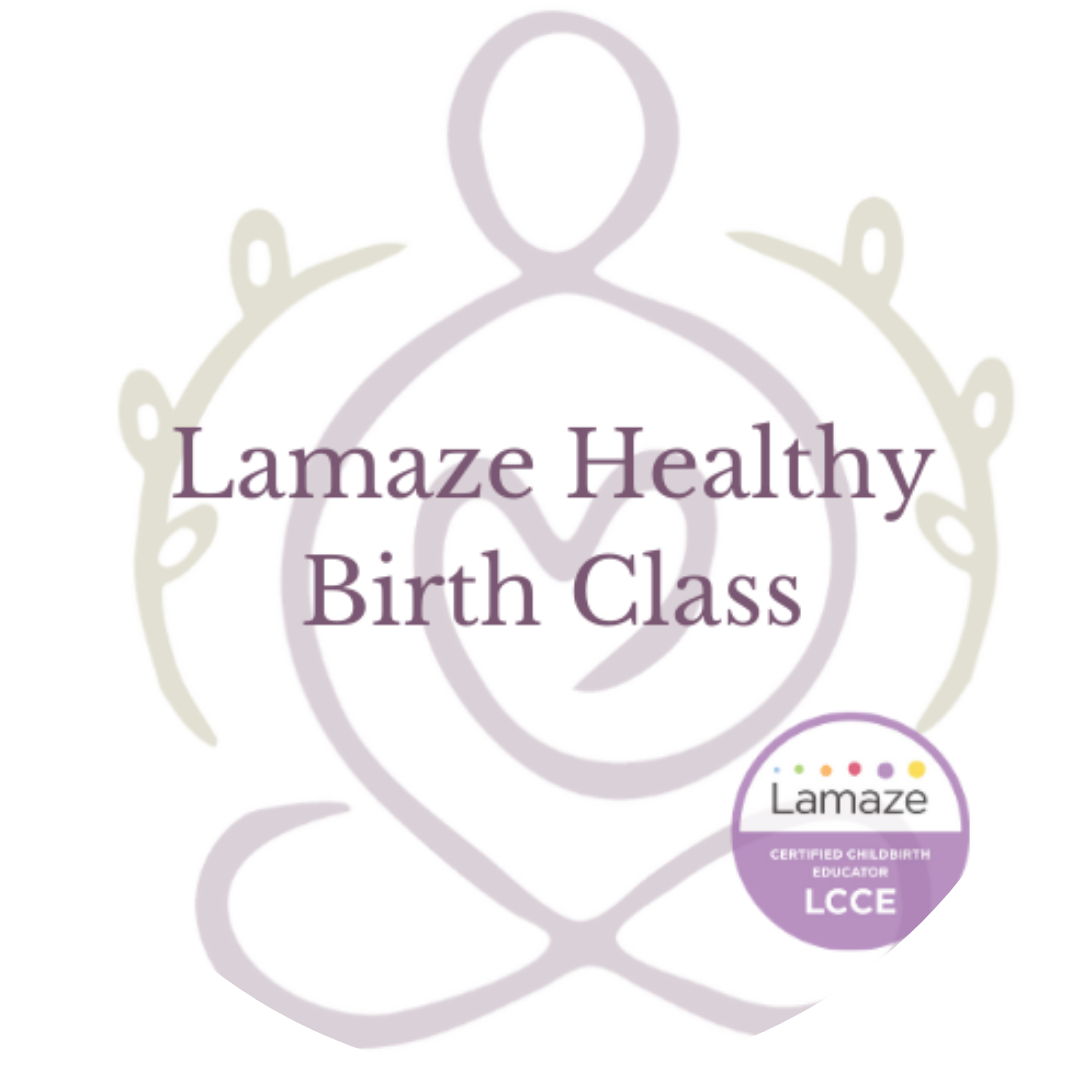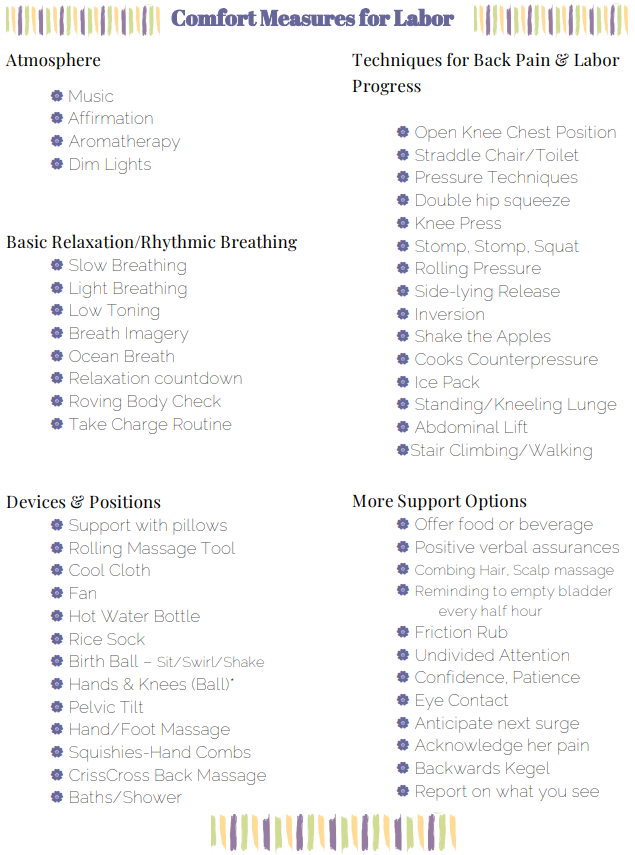Hi! Hi! Hi!
I hope you’re excited to spend some time getting ready for our interactive and FUN class together! Following are some goodie downloads that we’ll discuss in session and you’ll make good use of them by either reading them over or actually PRINTING the ones that stand out to you to make notes on. We’ll watch Anissa’s birth together if we have time.
Downloads for Natural Comfort Measures for Labor and Birth
Things to have with you for the most interactive classroom experience:
Save the list on the right.
Take notes during class
Keep it on hand for labor day!
A well-aired-up Exercise Ball*
65 cm size is best
Make sure that as you sit on it your hips and knees are at equal heights.
2-3 pillows*
Dip the Hip
When a baby’s head is lodged into the pelvis facing the mother’s left hip, labor can be more painful and longer. This assisted maneuver can help rotate the baby’s head to facing in a more optimal position.
Watch, practice and shave time off labor! And attend class to learn how to do a little bit every day!
Here’s Why…
Here’s How …
The THREE SISTERS OF BALANCE
#1 Forward leaning inversion
Create room in the lower uterus. Baby will use that space, with the natural pull of gravity, to snuggle into a more ideal position for birth. Once you get comfortable with this, you can even use it during labor if it seems to stall or if your back is hurting (kinda seems like baby is posterior.)
Kneel on the edge of a couch (or the top of the stairs). Kneel high to see what it feels like in your body.
Hold the edge of the couch, bed, or other surface you are kneeling on.
Carefully lower yourself to your hands on the floor and then lower yourself more to rest on your forearms. Elbows out, hands close. Use a stool or step, if you like, to help you walk your hands down.
Let your head hang freely. Your chin is tucked. Don’t rest your head on the floor. Your neck may need a little movement. Straighten your shoulders to make room for your head.
Your knees are close to the edge, your bottom is highest. You can tilt or sway your hips if you like, or gently, slowly undulate your spine.
You can flatten your lower back (posterior pelvic tilt) to give more room for the top of your pelvis.
Take 3 breaths. Belly loose, shoulders strong. Chin tucked and neck long.
Come back up on your hands, then lift yourself up to a high kneeling position again (see picture), using a stool, block or help from your helper. Take two breaths here. Then sit on your heels.
Swing your feet out from under you together. Feet together, moving like a mermaid to prevent a pull on your symphysis pubis (pubic bone). You will protect your pelvic stability this way.
PRACTICE this position for 3-breaths once or twice a day.
#2 BROAD LIGAMENT SIFTING
Relaxes tight uterine ligaments and abdominal muscles
Helps a baby rotate in pregnancy or labor more easily
Helps a birthing person relax before and during labor
PRACTICE this once or twice weekly
#3 Side Lying Release
Practice this daily - once on each side and follow these principles:
Keep your back and lower foot straight as a pin with foot flexed.
Partner holds on at the crest of the hip bone to keep your hips even. Use light downward pressure to relax the pelvic floor muscles.
Let your top leg and foot hang freely and feel the stretch!
Practice this once or twice weekly.
Want more? Visit this page!
“Shorter Labor Tools!”
By practicing these postures every day until your baby comes, you’ll actually shave time off of your labor. Do the work NOW - you won’t regret it!
Anissa’s birth story
Annissa and her husband had their first baby by cesarean section. This time they chose a hospital based Certified Nurse Midwife. Her experience is much different this time as she allows her body to achieve Vaginal Birth After Cesarean. Do you see comfort measures being used at home and at the hospital? How many can you identify?










